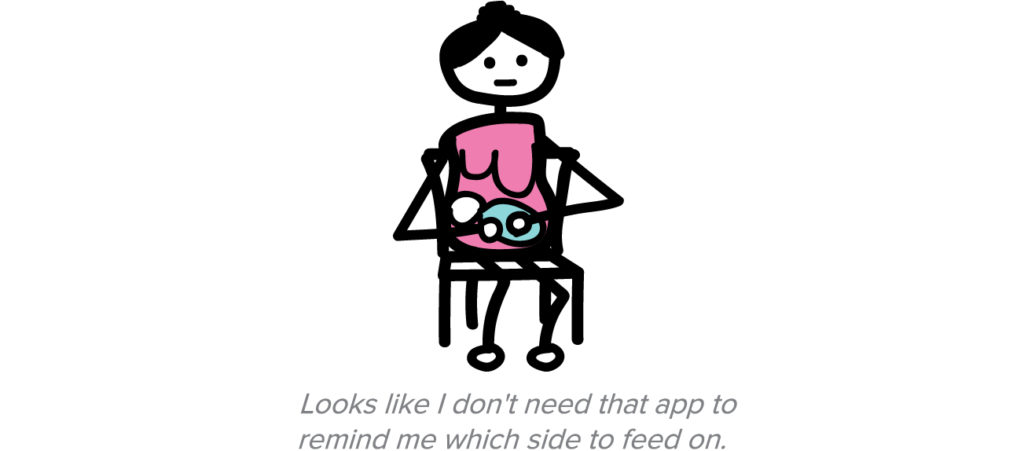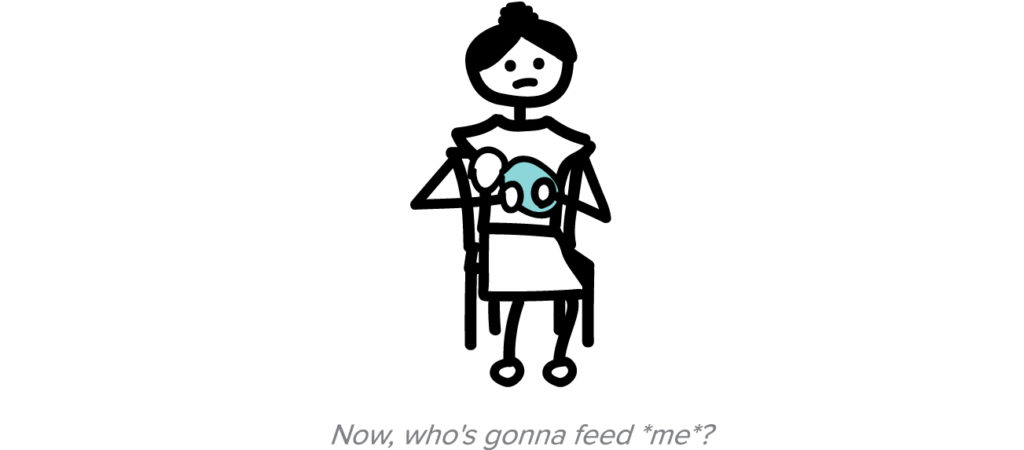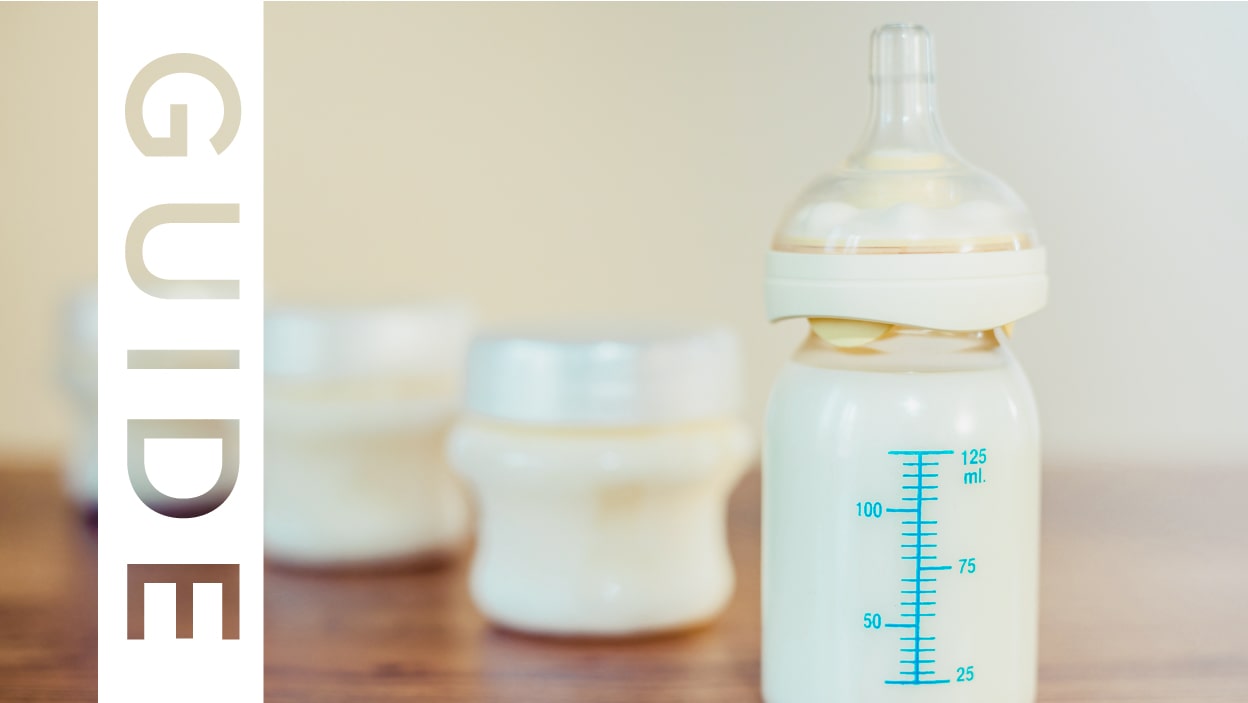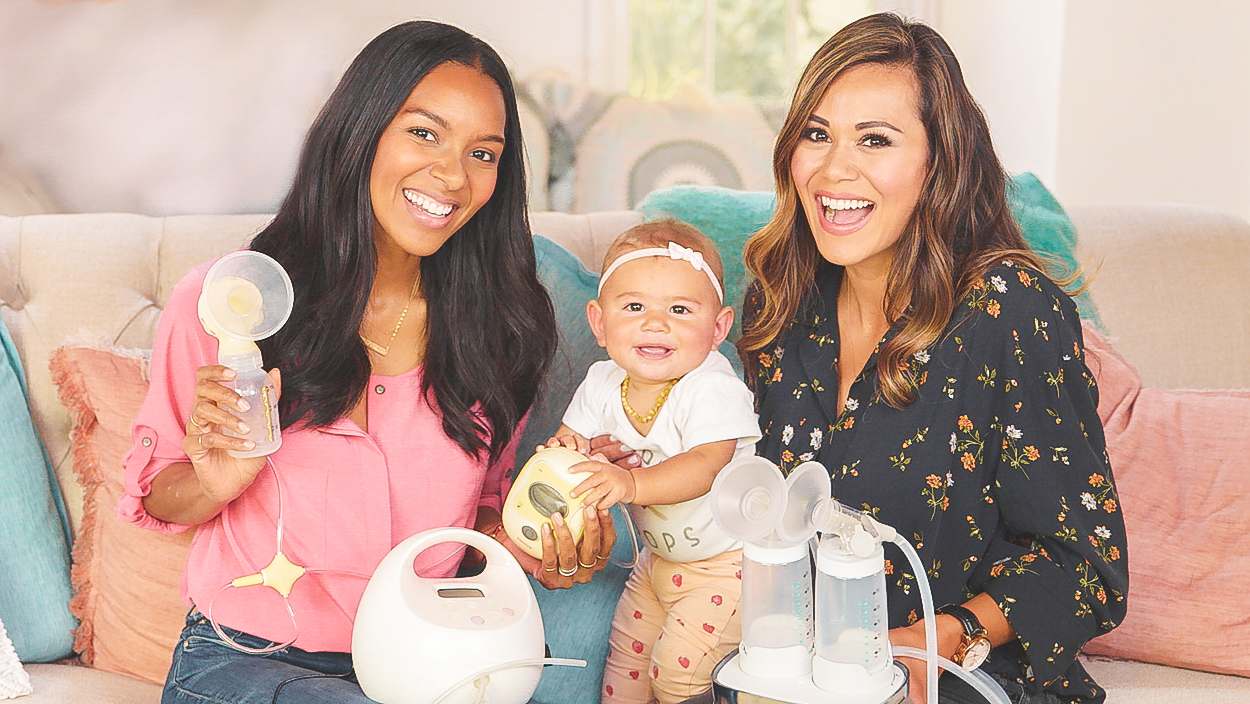

Before breastfeeding becomes your friend, it’s gonna make a pit stop in frenemy territory. That is, you’re committed to it, you’re working on it… but in those early early days, breastfeeding’s gonna put you thru the paces.
Breastfeeding can hurt like a b*^tch. It’s extremely time consuming, unexpectedly awkward (at first), arguably stressful…. and one of the things you’ll miss most when your baby is grown.
GETTING STARTED
Thankfully, your baby is born with the Rooting Reflex, so she knows exactly what she’s doing from her earliest moments, nuzzling around instinctively, goin’ for the boob. You, on the other hand… There are multiple positions, and you’ll probably settle on a favorite, but most moms of newborns go with the cross cradle or football hold to start. Keep in mind, you’ll be producing a thick yellow nutrient-dense colostrum before your actual milk comes in.
THE LATCH
The goal is a nice DEEP latch so your baby’s mouth is cupping as much of your areola as possible. If the baby is only sucking on your nipples, those poor things are going to get sickeningly sore and cracked and you will cry when baby even grazes them with her mouth. So, if your baby starts munching on nip (a shallow latch), slide your pinky finger into the corner of her mouth to gently pry her off you and try again. Use lanolin cream in between feeds and know that your nipples will heal as you and your baby get the hang of latching.
FEEDING & TYPES OF MILK
When your baby does latch correctly, you’ll notice her little jaws pulsing, and you can actually hear her swallow (ah, cherish that sound!). The foremilk that comes out first is light and watery and thirst quenching. The hindmilk that comes out toward the end of a feeding is fattier and more filling. So we recommend emptying one breast entirely so baby gets a nice mix of foremilk and hindmilk before offering up the other boob as “dessert.” Alternate which boob your start on (some women switch a hair elastic from wrist to wrist as a reminder). And don’t forget to burp baby in between boob sessions or you will see that milk again right quick in the form of a spit up.

LETDOWN, DEFINED
Letdown is the term for when your baby stimulates milk release by sucking — or when you simply think about your baby in the middle of a work meeting and start leaking milk through your suit. Invest in nursing pads for this reason. The human body is amazing.
NOT WORKING!! WHO YA GONNA CALL?!
First of all, struggling with breastfeeding at the very beginning is so normal. If you are still at the hospital, ask for a lactation nurse STAT. If you are already home, you can have your BFF or sister (or someone you’ve already been shirtless in Vegas with) give you some pointers, but if that still doesn’t work, schedule a home or on-site visit with a lactation consultant, seriously. They are total pros, have seen it all, and usually talk in those gentle types of voices that give you goosebumps. They often measure baby to the ounce before and after a feed so you have the satisfaction of knowing exactly how much milk baby got. And they’ll correct any latch or hold techniques to make sure you’re comfortable.
TWO WORDS: NIPPLE SHIELD
If you have shorter or inverted nipples, this is a tool to have on your radar because it can make a big difference if you’re in a rough patch. A nipple shield is essentially a bottle top for your boob; it’s a flexible, silicone piece that you place on your areola/nipple to give it “umph”. It can help a reticent baby to latch (or can help your really banged up nipples heal while continuing to nurse.)
Think of this solution as short-term, though, since sometimes nipple shields cause poor milk transfer (ie: when babies can’t suck well enough to take out enough milk from the breast) which can in turn lead to mastitis or a drop in supply for you. So, ideally, if you’re using a nipple shield, you’re also working with a lactation consultant to resolve the underlying issue — or at the very least, making your ped aware so she can ensure that baby’s weight is on track. Apart from that, always make sure that baby is swallowing when nursing and that breasts feel softened after the feed — and that the baby isn’t hungry within like 30 minutes of an hour long feed (which could indicate that the baby isn’t getting enough).
Some nipple shield alternatives: If the issue is a short nipple, try “sandwiching” your breast more to give baby more to grasp. Or stimulate the nipple prior to latching. Or pump for a few minutes to pull out the nipple and then quickly latch baby on. If it’s about painful nipples, then what you really need is some help with the latch.

ROCK HARD BOOB SYNDROME
OK, we made up that name. But sometimes, your breasts are so engorged, it’s actually tough for your baby to latch on. You might need to pump a little out or self-express to soften your breast before a feeding (and in the early days, especially, a warm compress can really help). Women are often worried that this can lead to a potential oversupply problem (expressing more milk than your baby is drinking), but in our experience, a tiny bit of pre-nursing pumping won’t cause overproduction — and a little extra supply of milk in the freezer never hurt anyone. Just focus on one feed at a time.
WHEN CAN I GET BOTTLE RELIEF?!
This is a hot (read: slightly controversial) topic. Generally speaking, you can introduce a bottle once a solid relationship/ latch with the breast is established. Some moms wait several weeks or even months to introduce a bottle because they want to make sure that breastfeeding is working well (what if baby suddenly starts hating on the nip?). But it is possible to wait too long, to the point that your baby is so breast-centered that they experienced “bottle refusal” (Oh LORD, we can’t imagine). Our recommendation is to introduce the bottle sometime between 3-4 weeks; we wouldn’t want to deprive Dad of experiencing that 4am feed early on.
BUT ENOUGH ABOUT BABY, LET’S TALK ABOUT MOM!
SUPPLIES
You MUST make sure you’re physically comfortable while breastfeeding or all of those hours nursing will add up in the form of chronic neck and back pain. In addition to a solid nursing pillow, you should get a back pillow, foot stool, and a great nursing chair — one that’s comfy and can also take a milk beating. The goal with all these accoutrements is to allow you to bring the baby toward your breast so that you don’t constantly strain yourself leaning in toward the baby.
NUTRIENTS
Of course you won’t realize how thirsty you are until you get the perfect latch and hear you baby sucking that liquid gold. So remember, BEFORE you sit down, grab a glass water and just have it by your side. Same goes for snacks. And make sure to use the bathroom prior to nursing. We know you’re not a kindergartener, but it can be tough to remember these things when baby is screaming like a frantic, hangry lunatic.
BUILD YOUR NEST
Some babies feed for the better part of an hour, and many fall asleep while eating (imagine!)… so you could be sitting there awhile and don’t want to get trapped. In addition to the aforementioned snacks and water, have on hand your phone, a book (or better yet, tablet – easier to pull off one-handed reading), and TV remote. You’re working hard and burning up some calories – go ahead and reward yourself with some DVR’ed BRAVO.







